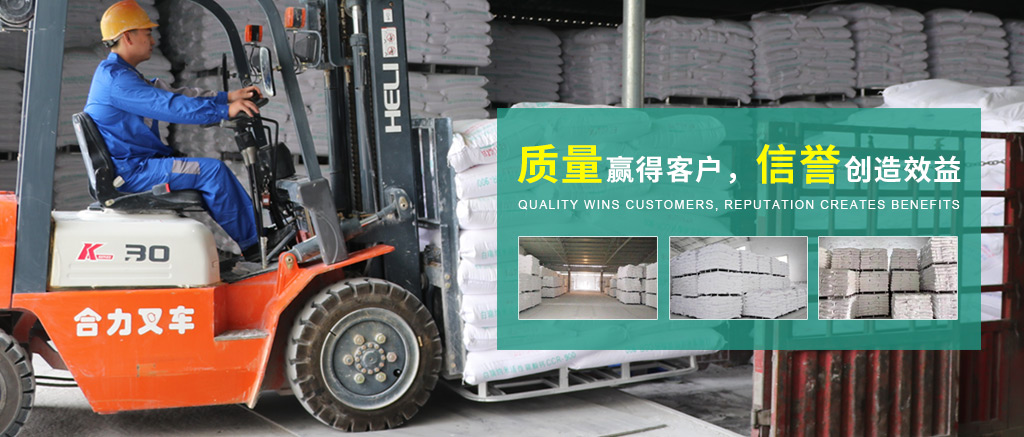Technical points of modified calcium carbonate for filling masterbatch (1)
Time: 2019-04-28
Why is calcium carbonate modified for filling masterbatch
Calcium carbonate is a very important inorganic chemical product, widely used in plastics, rubber, paint, paper and other industries. In recent years, due to the continuous expansion of the amount of various synthetic resins and chemical raw materials, energy consumption is increasing, so in the plastics, rubber and other industries, people are more and more considering the addition of resource-rich and inexpensive inorganic fillers in polymer synthetic materials. While adding inorganic fillers (such as calcium carbonate) to plastic and rubber products as much as possible, the physical and mechanical properties of the products should be ensured.
Ordinary inorganic fillers, such as ordinary calcium carbonate, are difficult to meet these requirements, so it is necessary to modify them to improve their comprehensive properties. With the rapid development of the composite material industry, calcium carbonate is not only a filler, but also an important modifier.
Filling plastic products with active calcium carbonate with excellent properties can reduce the cost while improving the hardness, elastic modulus, dimensional stability and thermal stability of the product. Active calcium carbonate is modified on the basis of ordinary calcium carbonate, so as to achieve the dual purpose of filling and modifying in composite products. These modifications include the modification of crystal form, particle size, particle size distribution and surface properties of calcium carbonate.
There are two main ways to modify calcium carbonate
The first is to change the particle size, so that calcium carbonate particles fine or ultra-fine (including changing the crystal shape and particle size distribution of calcium carbonate), with different crystal shapes of fine or ultra-fine calcium carbonate to improve its dispersion in the resin, and with small particles and large specific surface area, to obtain the reinforcing effect in plastics, rubber and other products.
This modification method needs to improve the carbonization, pulverization and dehydration drying technology of the traditional calcium carbonate production process. The production process is complicated, and the drying conditions are difficult to achieve in mass production, and the product cost is high.
The second is to improve the surface properties of calcium carbonate, so that it changes from inorganic to organic, so as to increase the compatibility of calcium carbonate and organic resin, and improve the processing properties and physical and mechanical properties of products.
This method is mainly the use of amphiphilic structure molecules (with the structure of inorganic and organic groups, including surfactants, long chain organic acids, coupling agents) to modify the surface of calcium carbonate, its process, equipment is relatively simple, easy to implement, the coupling agent developed in recent years to deal with different particle sizes of calcium carbonate, the modification effect is very good. It has been used more and more in the production of composite materials such as plastics and rubber, which is an effective way to expand the new varieties of calcium carbonate filler.
Activation mechanism of calcium carbonate
There are many substances that can modify the surface of calcium carbonate, but most of the previous studies focused on the surface modification of calcium carbonate with organic acids and the preparation of corresponding active calcium carbonate products. Since the function of organic acids on the surface of calcium carbonate is mainly a physical adsorption process, in the mixing process with resin, the interface between calcium carbonate and resin provides lubrication, so the modification of organic acids can change the rheological properties and processing properties of the material, and the physical properties of the product are almost no improvement.
In recent years, in-depth studies have shown that when calcium carbonate is modified by coupling agents, the inorganic and organic ends of the coupling agent molecules can chemically react with the surface of calcium carbonate and organic resin, and at the same time produce entangling effect with organic resin, and cross-linking phenomenon can also occur in the presence of crosslinking agents. This effect not only changes the surface polarity of calcium carbonate, but also increases the interface adhesion of calcium carbonate and organic resin, so the modification of coupling agent can not only improve the processing performance of calcium carbonate filled products, but also improve the physical and mechanical properties of products.
The effective surface modification agents for calcium carbonate are titanate coupling agent and aluminate coupling agent. However, calcium carbonate treated with titanate coupling agent will change color in some polymers due to oxidation. During storage or in the processing of filled products, the organophilic end of the titanate molecule is prone to hydrolysis or alcoholysis. At the same time, the thermal decomposition temperature of titanate is also lower than that of aluminate, so it is ideal to use aluminate coupling agent to treat calcium carbonate.
The mechanism of activating calcium carbonate with aluminate coupling agent is as follows: the molecular system of aluminate coupling agent belongs to amphiphilic structure, one end is the inorganic group, the other end is the organic group. When the coupling agent acts on the surface of calcium carbonate, the calcium ions and carbonate ions on the surface of calcium carbonate particles contact with the water molecules in the atmosphere, and hydrolysis occurs, resulting in an alkaline and oleophobic hydroxyl surface.
CaCO3+ H2O = Ca (OH) 2 + CO2 ↑
The surface hydroxyl group of calcium carbonate can chemically combine with the inorganic end of aluminate coupling agent to produce surface modified calcium carbonate particles. These surface modified calcium carbonate particles are blended with the resin, and the pro-organic end of the coupling agent molecules can tangle with the resin molecules. Due to the action of the coupling agent, the calcium carbonate has the activation function, improves the affinity with the organic resin, and achieves the modification and enhancement effect of the resin.







 Home
Home  News
News
